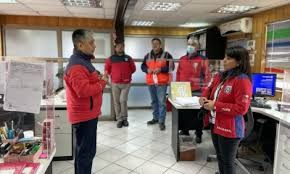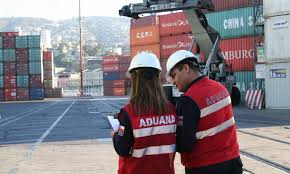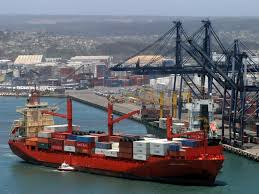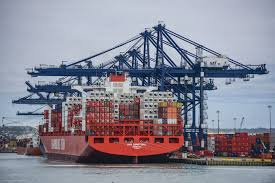How do customs procedures work at the Port of San Antonio?

How do customs procedures work at the Port of San Antonio?
How do customs procedures work at the Port of San Antonio? The Port of San Antonio plays a crucial role in Chile’s international trade, and understanding its customs procedures is essential for importers and exporters.
Efficient customs processes help facilitate the smooth movement of goods through the port.
Here’s an overview of how customs procedures work at the Port of San Antonio.
Overview of Customs Operations
Customs operations at the Port of San Antonio are managed by the Chilean Customs Service, known as “Aduanas.”
This agency is responsible for enforcing customs regulations and collecting duties on imported and exported goods.
The customs procedures ensure compliance with national laws and facilitate legitimate trade.
By maintaining security and integrity, the customs service supports the port’s vital role in the economy.

Documentation Requirements
Before goods can be cleared through customs, specific documentation must be submitted.
Key documents include the bill of lading, commercial invoice, packing list, and any necessary permits.
Importers must also provide proof of payment for customs duties and taxes.
Ensuring that all documents are accurate and complete is crucial to avoid delays.
Customs Declaration
Importers and exporters must submit a customs declaration, detailing the nature and value of the goods.
This declaration provides customs officials with essential information for assessing duties and compliance.
It typically includes descriptions of the goods, origin, quantity, and value.
Accurate declarations help expedite the clearance process and minimize the risk of inspections.
Customs Inspections
Customs inspections are a standard part of the clearance process at the port.
Goods may be subject to random inspections to ensure compliance with regulations.
During an inspection, customs officials may examine documentation and physically check the cargo.
These inspections help detect any discrepancies or illegal activities, ensuring security and compliance.
Payment of Duties and Taxes
Once the customs declaration is approved, importers must pay the applicable duties and taxes.
Customs duties vary based on the type of goods and their declared value.
Payments can typically be made online or at designated customs offices within the port.
Prompt payment is essential to avoid delays in the release of goods.
Release of Goods
After successful clearance and payment, goods are released for delivery.
Importers can arrange for transportation from the port to their final destination.
Efficient logistics and transportation services available at the port facilitate this process.
Ensuring timely pickup of cleared goods is essential for maintaining supply chain efficiency.
Export Procedures
Customs procedures for exporting goods from the Port of San Antonio follow a similar process.
Exporters must prepare the necessary documentation and submit a customs declaration for their shipments.
Compliance with export regulations, including permits and quotas, is crucial for a smooth process.
Ensuring all documents are accurate helps facilitate timely clearance for outgoing shipments.
Use of Technology
The Port of San Antonio employs technology to enhance customs procedures.
Digital platforms enable online submission of customs declarations and payment of duties.
This streamlining reduces processing times and enhances the overall efficiency of customs operations.
The use of technology also helps improve transparency and reduces the potential for errors.
Customs Brokers
Many importers and exporters utilize customs brokers to navigate the complexities of customs procedures.
These professionals are knowledgeable about regulations and can assist with documentation and compliance.
Using a customs broker can help expedite the clearance process and minimize the risk of delays.
Their expertise is particularly valuable for businesses unfamiliar with the intricacies of customs regulations.
Customs procedures at the Port of San Antonio
Customs procedures at the Port of San Antonio are designed to facilitate efficient trade while ensuring compliance with regulations.
From documentation requirements to customs inspections and payment of duties, each step is vital for the smooth movement of goods.
Understanding these procedures is essential for importers and exporters seeking to navigate the complexities of international trade.
By following the guidelines and leveraging available resources, businesses can successfully manage customs operations at the port!





Leave a Reply